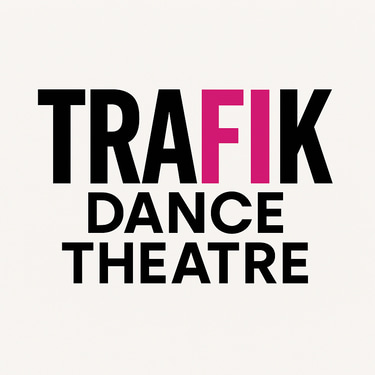Press Links:
http://www.anticteatre.com/events/event/trafik-im-alive/?lang=enhttps://www.tjedansuvremenogplesa.com/copy-of-predstavahttps://www.alter.hr/im-alive-predstava-u-kojoj-se-susrecu-klasicni-balet-ekscentricna-moda-i-post-punk-zvukhttps://www.novilist.hr/tag/im-alive/https://www.novilist.hr/ostalo/kultura/nova-predstava-u-produkciji-rijeckog-trafik-a-i-platforme-hr/

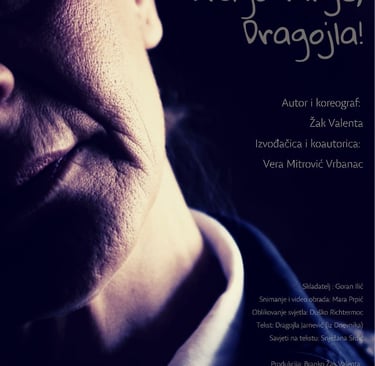
Word from the critics:
Vera Mitrović Vrbanac delivers a stunning portrayal of Dragojla’s emotional states, especially her unfulfilled desires in love and literature. Her performance is both heartfelt and transformative, epitomized in moments such as the release of her tightly wound hair, symbolizing Dragojla’s courage and self-awareness.
Kim Cuculić , Novi list
The collaboration between Valenta and Mitrović Vrbanac vividly illustrates a woman who was simultaneously fragile and resilient, a trailblazer who climbed barefoot to the peak of Okić (now known as "Dragojla’s Trail") and became a pioneer of Croatian mountaineering. The raw honesty of her diary, published posthumously, finds a powerful echo in this performance.
Jelena Oberman , Alter
Critics have praised the natural, understated acting that steers clear of theatrical excess. Olga Vujović writes, “The performance of Vera Mitrović Vrbanac is mesmerizing—she doesn’t just act as Dragojla; she is Dragojla.” Jelena Oberman highlights how the performance corrected a historical injustice, shining a spotlight on this remarkable woman from Karlovac
Olga Vujović , Kritikaz
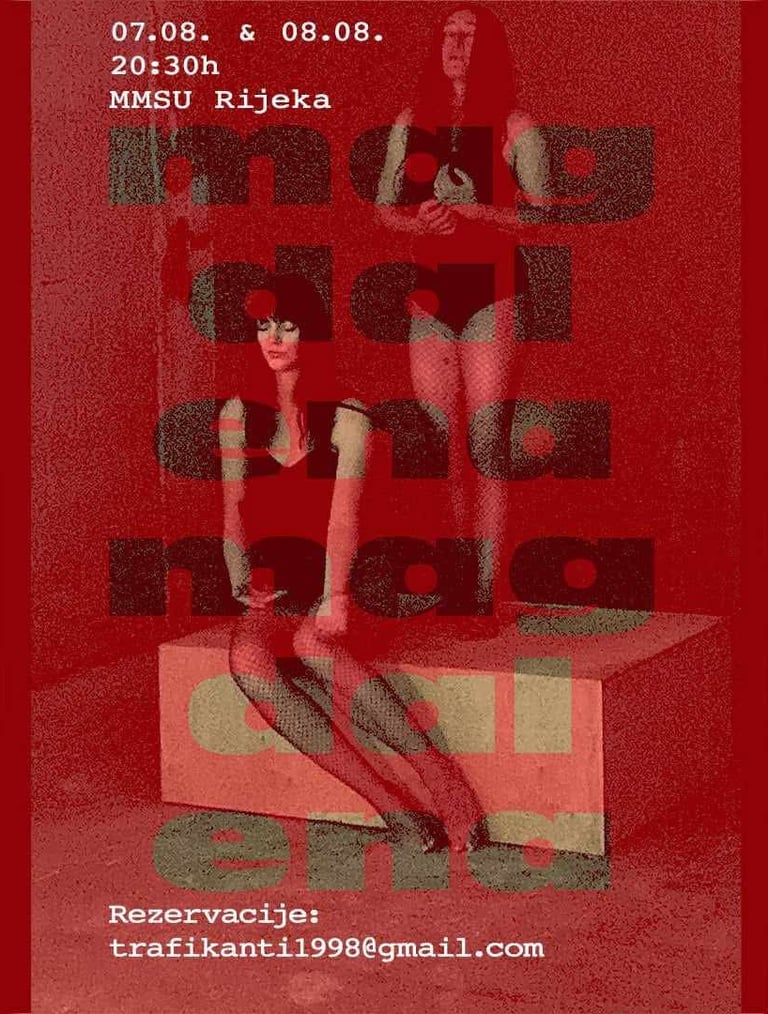

Word from the critics:
If the focus of the performance Diagnosis Art (2012) was on examining aesthetic modes of madness through the biographies of Antonin Artaud and Paner, Hermaphrodites of the Soul (2014) centers on the fluid performance of gender identities, with choreographic and dramaturgical motifs reflecting the works of Derek Jarman, Dejan Nebrigić, and Amanda Lear.
The new project Magdalena, Magdalena dissects the contradictory constellation of art and religion, through which body politics are refracted in the context of heteronormative representations. The New Testament figure of the Christian saint—who was the first to bear witness to the central mystery of faith: the resurrection—becomes the conceptual starting point for an interactive choreographic installation.
By problematizing (meta)physical, racial, and gendered cruelties, the project explores possibilities for transgressive embodiments. As a semantically multi-layered and theologically enigmatic figure, Mary Magdalene provokes feminist and queer practices of gender equality. By reaffirming the subversive aspects of her (pre)history, patriarchal models of identity politics are deconstructed. The project thus foregrounds the performative gesture of affective bodies, whose trans*figurations open space for disobedient performance resisting the violence of norms, as noted in relation to the performance.
— Novi list, Kim Cuculić
August 3, 2023
Recent Works (2020–2025)
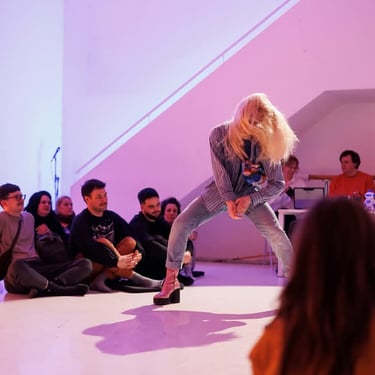

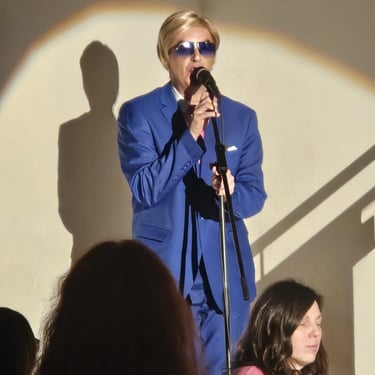


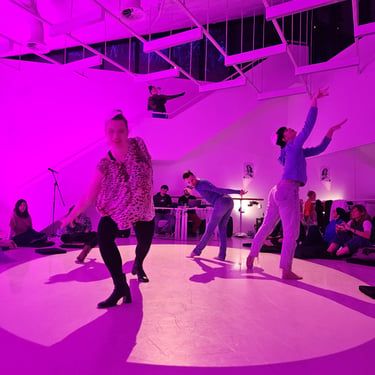

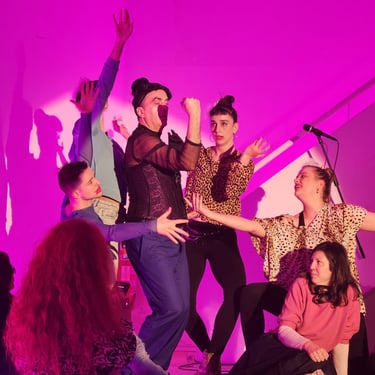
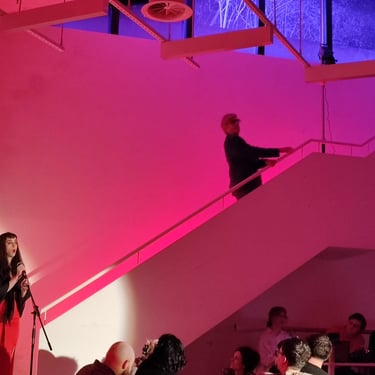
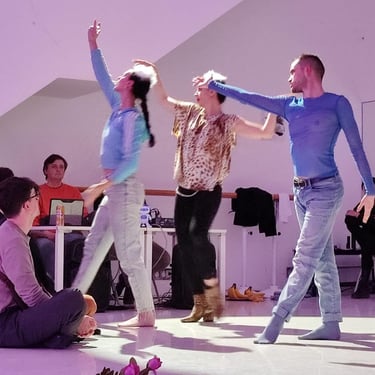
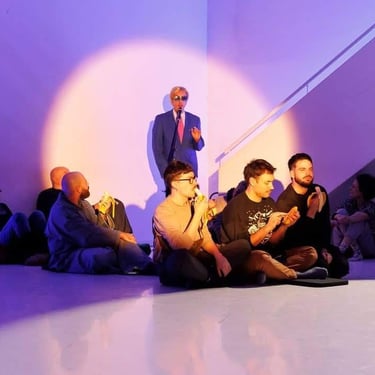

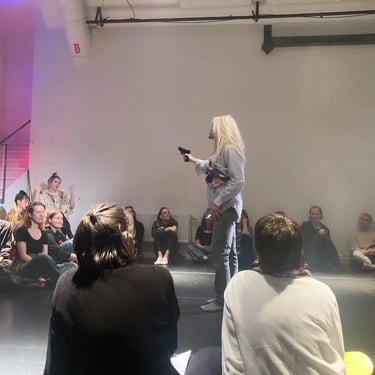
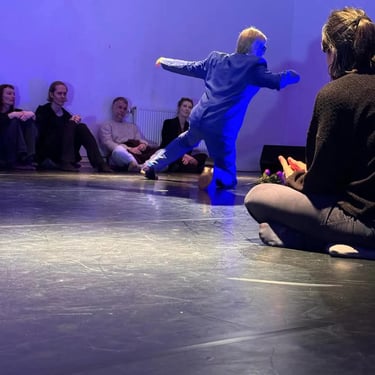

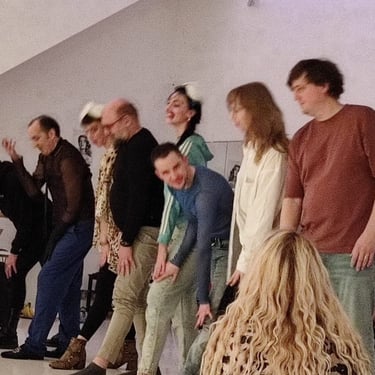
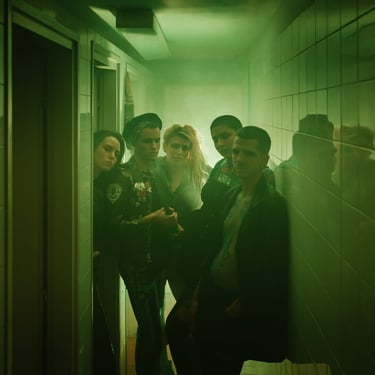
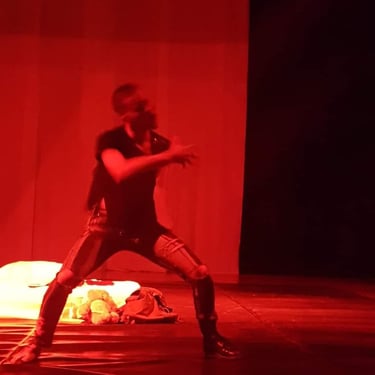
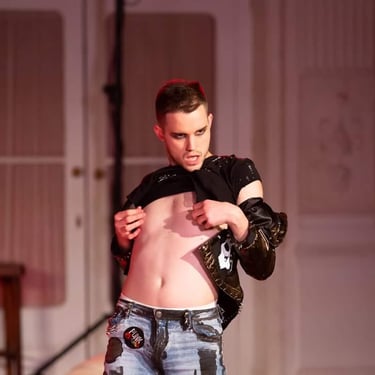
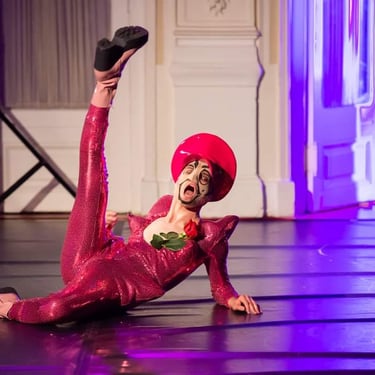


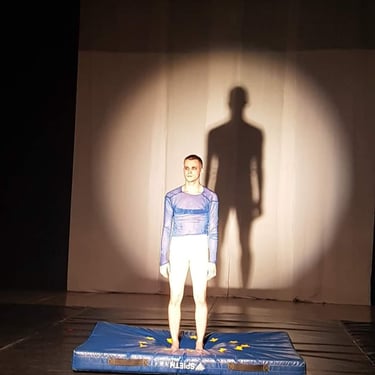
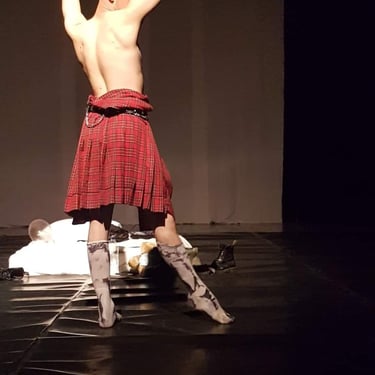

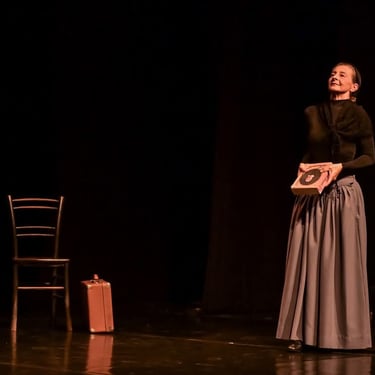

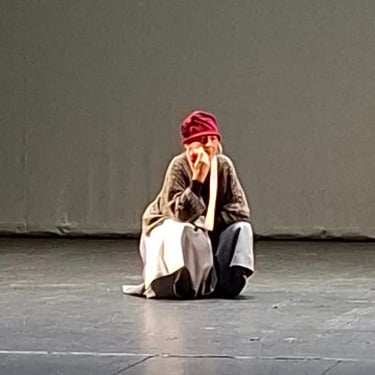
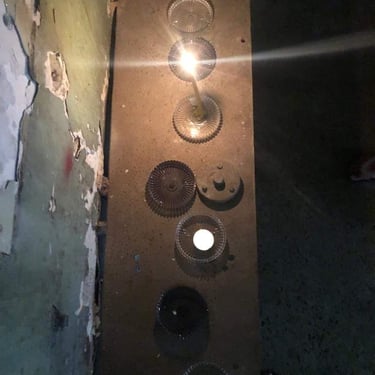
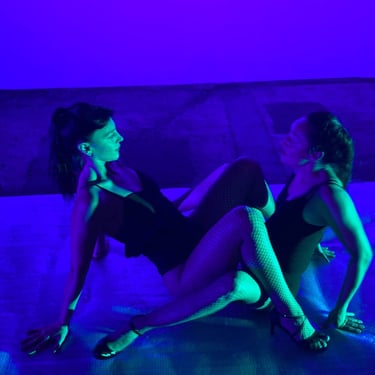
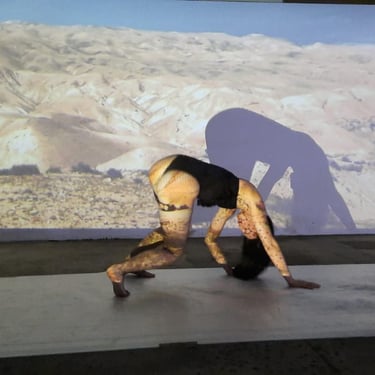
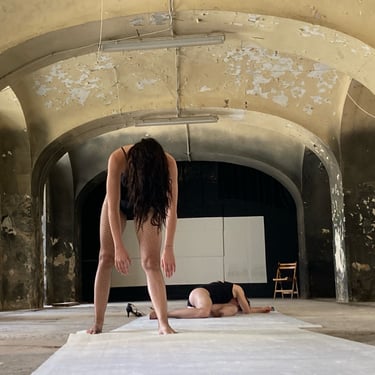

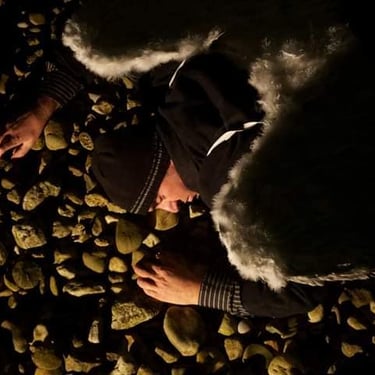
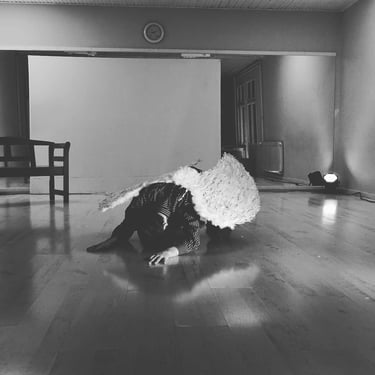

Situation in the Body, No More Body
Premiere: 2021
Author and Performer: Žak Valenta
Duration: 50 minutes
Production: TRAFIK, Museum of Contemporary Art Zagreb, Festival Improspekcije Zagreb
Supported by: Ministry of Culture and Media, Primorje-Gorski Kotar County
About the project :
This solo performance by Žak Valenta delves into the somatic and psychological narratives of healing and recovery following physical trauma. Employing diverse techniques, Valenta invites the audience to become active participants, using their imagination to guide and animate the performer. The work unfolds through a spectrum of scenarios that both include and transcend the body as a medium, with improvisational techniques—referred to by Valenta as “situational performances”—serving as the foundation for exploring trauma and resilience.
Drawing inspiration from Wim Wenders’ iconic film Wings of Desire and its angelic protagonist Damiel, the performance at times transforms the space into a Berlin of the 1980s. While physical trauma initially restricts the performer's movement, it simultaneously deepens his understanding of the psychodynamics of the body. In this period of limited physical capacity, Valenta develops an approach to dance and improvisation that extends beyond corporeality, seeking to maintain the essence of dance through other imaginative and performative resources.
Valenta’s intuitive and natural choreographic voice guides the process, even as it occasionally transcends traditional formats of dance improvisation. This experimental approach resonates with the artist’s broader vision of expanding the boundaries of movement, choreography, and embodiment in performance art.
The performance premiered in a site-specific format as part of the Improspekcije Contemporary Dance Festival in 2020. It was subsequently presented within the residency program at Pogon Jedinstvo in Zagreb, the Periskop Festival in Rijeka, and the Picnic Park Festival in Karlovac.
Please to meet you, Dragojla
Premiere: 2021
Author / Choreographer: Žak Valenta
Performer / Co-author: Vera Mitrović Vrbanac
Composer: Goran Ilić
Video & Editing: Mara Prpić
Lighting Design: Duško Richtermoc
Text: Dragojla Jarnević (from her Diaries)
Text Consultant: Snježana Srdić
Produced by: Branko Žak Valenta, Artistic Organization TRAFIK, Rijeka
Funding: Ministry of Culture and Media of Croatia & City of Zagreb (2022)
Supported by:
City of Karlovac, Karlovac County
Project Partners:
Studio 23 Karlovac, Zagreb Dance Center
About the project :
This solo dance-drama, choreographed by Branko Žak Valenta and performed by Karlovac-based artist Vera Mitrović Vrbanac, explores and portrays the life and legacy of Dragojla Jarnević, a 19th-century Croatian writer and educator. Through selected biographical narratives and metaphorical scenes expressed via movement, text, and multimedia projections, the performance offers a contemporary lens on Jarnević's intriguing life, drawn from her diary entries, and resonates with the challenges of our time.
Born in Karlovac (January 4, 1812 – March 12, 1875), Jarnević was a trailblazer of progressive thought and action. Her work and ideas, touching on what we now call feminism and women’s rights, emphasized equality in education and public life. Writing in Croatian despite her native German tongue, she saw language as the foundation of national identity, embodying the spirit of the Croatian National Revival.
Jarnević’s contributions extended beyond literature. She was a pioneer in education, a reformer, and a mountaineer who climbed barefoot to the summit of Okić—now “Dragojla’s Trail.” Her resolute belief in personal freedom and her unwavering pursuit of truth shine through in her 1,100-page diary, which she meticulously prepared for publication, knowing its value would only be fully recognized posthumously.
Her multifaceted persona—writer, educator, feminist, Illyrian advocate, mountaineer, and visionary—defied the conventions of her time and continues to inspire. For the creators of this project, Jarnević’s biography and presence transcend categories and stereotypes, offering a rich tapestry of ideas and actions that remain profoundly relevant.
Magdalena, Magdalena
Premiere: 2023
Choreographer / Author: Žak Branko Valenta
Artists: Žak Valenta, Andrej Mirčev, Nikoleta Marković, Eleonora Magdalena Vrdoljak, Nikolina Komljenović
Music: Nine Inch Nails (instrumental & karaoke versions)
Video & Photography: Andrej Mirčev, Eleonora Magdalena Vrdoljak, Nikoleta Marković
Makeup & Hair: Ksenija Nakić Alfirević
Graphic Design: Nikoleta Marković
Produced by: Artistic Organization TRAFIK in partnership with MMSU Rijeka and Kamov Residency Program
Supported by: City of Rijeka, City of Zagreb, Ministry of Culture and Media of Croatia
Venue: Museum of Modern and Contemporary Art (MMSU), Rijeka
Duration: approx. 60 minutes
About the project :
Magdalena, Magdalena is the third installment of Žak Valenta’s trilogy, Art and Taboo. While Diagnosing Art (2012) explored the aesthetic modes of madness through the biographies of Antonin Artaud and Panero, and Hermaphrodites of the Soul (2014) examined fluid performances of gender identities inspired by Derek Jarman, Dejan Nebrigić, and Amanda Lear, Magdalena, Magdalena delves into the complex intersection of art and religion.
This new project dissects the contradictory relationship between art and heteronormative religious representations, using the New Testament figure of Mary Magdalene—witness to the central mystery of Christianity, the Resurrection—as a conceptual starting point. It manifests as an interactive choreographic installation, questioning the (meta)physical, racial, and gendered violence inherent in traditional narratives while exploring the potential for transgressive embodiments.
As a semantically rich and theologically enigmatic character, Mary Magdalene provokes feminist and queer discourses on gender equality. By reaffirming the subversive elements of her story, the project deconstructs patriarchal models of identity politics. It foregrounds the performative gestures of affective bodies, whose transgressive figurations create space for resistant performances that defy normative violence.
Through this interdisciplinary and collaborative investigation, Magdalena, Magdalena continues Valenta’s commitment to challenging social taboos and expanding the boundaries of performance art.
The project premiered as part of the program of the Museum of Modern and Contemporary Art in Rijeka, the Crta za Beskraj festival at KNAP Theatre in Zagreb, and toured to SALA BUTOH in Catania and the Dance Theatre in Palermo.
Word from the critics:
At the end of the performance, the artist ventures into an unexpected realm: the zone of pure dance. Defying the title No More Body, Valenta steps fully into the body, immersing himself in simple, continuous circular movement, carried by the music. With softly harmonized arms, he spins the performance space. Though visibly cautious, avoiding abrupt movements, jumps, or jerks, this dance reunites body, imagination, and performance. It exudes a sense of spirituality and fragility while demonstrating control over the body, space, and energy.
— © Iva Nerina Sibila, PLESNA SCENA.hr, January 29, 2021
As I followed the artist’s instructions, I found it fascinating how challenging it is to fully dedicate oneself to imagining a situation within the context of realistic possibility. Our imagination tends to take shortcuts, forgetting that if we want to "move" a body from one side of a glass room to the other, we can't simply envision it flying over like in a cartoon. Instead, we must engage in the meticulous work of imagining its walk across the stones.
— Written by Una Bauer
Photo: Dalia Mejaški
Photo:Selena Beram, Dalia Mejaški
Word from the critics:
The performance without pretentiousness raises questions: "What is our resistance, what are we rebelling against and what are our goals?" (A. Mirčev), while not even hinting at the answers, leaving the possibility for this space to open up in the viewer's individual need for exploration. Although the performance is intended for the space of the Croatian Music Institute in Zagreb and Filodrammatica in Rijeka, it would be no less interesting to watch it in a minimalist black box. Especially in powerful scenes such as the touching finale in which the dancer stands naked and is simply present here and now, suggesting everything that the choreographer brings here and now in the circumstances and conditions in which he creates today. Because this is a story about a dancer and a choreographer, about being still alive and doing what he has to do as long as he is alive because he cannot do less.
I'm Alive brings a personal story about a body that refuses to be just a philosophical enigma and/or just a puppet in service, and therefore is strong and vital as a whole. The audience's ovations and long-lasting applause are confirmation that this strength in the experience, but also the desire for support, spilled over to the audience.
© Vera Mitrović Vrbanac, PLESNA SCENA.hr, November 15, 2021.
Photo: Nikoleta Mirčev, Andrej Mirčev, Žak Valenta
CHEZ MICHOU (The Mystery of Blue)
Premiere: 2024
Author / Choreographer: Žak Branko Valenta
Co-creators / Performers: Toni Flego, Maria Arkouli, Eleonora Magdalena Vrdoljak, Ekin Tunçeli, Hannah Krebs, Žak Branko Valenta
Dramaturgy: Andrej Mirčev
Visual Identity: Nikoleta Mirčev
Music: Dušan Maksimovski
Produced by: Artistic Organization TRAFIK, Rijeka; MDT Moderna Danstatern Stockholm; SKH Stockholm University of the Arts
Duration: 50 minutes
About the project :
.Chez Michou (Mystery of Blue) is a choreographic work that mobilizes the legacy and aesthetic framework of cabaret to intertwine the persona of the French singer and drag artist Michou with a profound poetic investigation of disorientation. The performance activates a queer spatiality that blurs boundaries between internal and external realities, as well as between abstraction and the tangible fabric of fiction. Navigating the complexities of identity confusion, the choreography maps a cartography of dislocation, richly textured through objects, gestures, and language. This work radicalizes the collapse of heteronormative structures by emphasizing the corporeal capacity to resist fixed coordinates and to embody a subject that exists deliberately out of place.
Inviting audiences to embrace disorientation, Chez Michou celebrates the dissolution of fixed horizons and reclaims affective territories of Otherness.
This project represents an ongoing choreographic inquiry into identity as a performative, kinetic, and spatial frontier, actively engaging the audience in this exploration. Paradoxically, the search affirms disorientation itself as a form of orientation, whereby the viewer’s gaze is intentionally obstructed and distanced from familiar objects of perception.
Rooted in the artist’s ambition to bridge the queer generation of the 1980s—with which he personally identifies—and the queer generations preceding and succeeding it, Chez Michou reflects on the evolving interpretations of queer identity. Utilizing a methodology of content accumulation and interweaving diverse performance genres, musical and costume references, textual elements, and site-specific manipulations of space and time, the project challenges audiences to transcend conventional ontologies and habitual modes of engaging with queer performance.
The performance’s layered complexity encourages critical reflection on queer identity through a theoretical lens inspired by Sara Ahmed, a British-Australian scholar whose work spans feminist theory, lesbian feminism, queer theory, affect theory, critical race theory, and postcolonial studies. Ahmed’s concept of “orientation,” elaborated in Queer Phenomenology: Orientations, Objects, Others, is embraced as both a theoretical foundation and an operative methodology, crafting a space of productive “frustration” that demands active participation and a departure from comfort zones. This approach fosters queer activism by destabilizing the security of the familiar, deliberately introducing ambiguity and multiplicity as core choreographic strategies.
Simultaneously, the choreography resists the hegemony of the “learned gaze” and the search for the known, seeking to escape the confines of Kantian rationalism and aligning with Ahmed’s queer phenomenology. This positioning opens a radical space for reimagining normative perceptions and expanding the boundaries of embodied performance.
The performance premiered as part of the festival of graduation works MAKOR MIX XXL DELUXE – THE BEGINNING OF EVERYTHING ELSE, by a master’s choreography student at Stockholm University of the Arts, at the MDT Theatre in Stockholm. It was also presented at the Zagreb Dance Centre in Croatia, where it was restaged due to high audience demand. This autumn, premieres are planned in Rijeka to open the 10th anniversary of the Periskop Contemporary Dance Festival, the ACT Festival in Bilbao, Spain, and other locations.
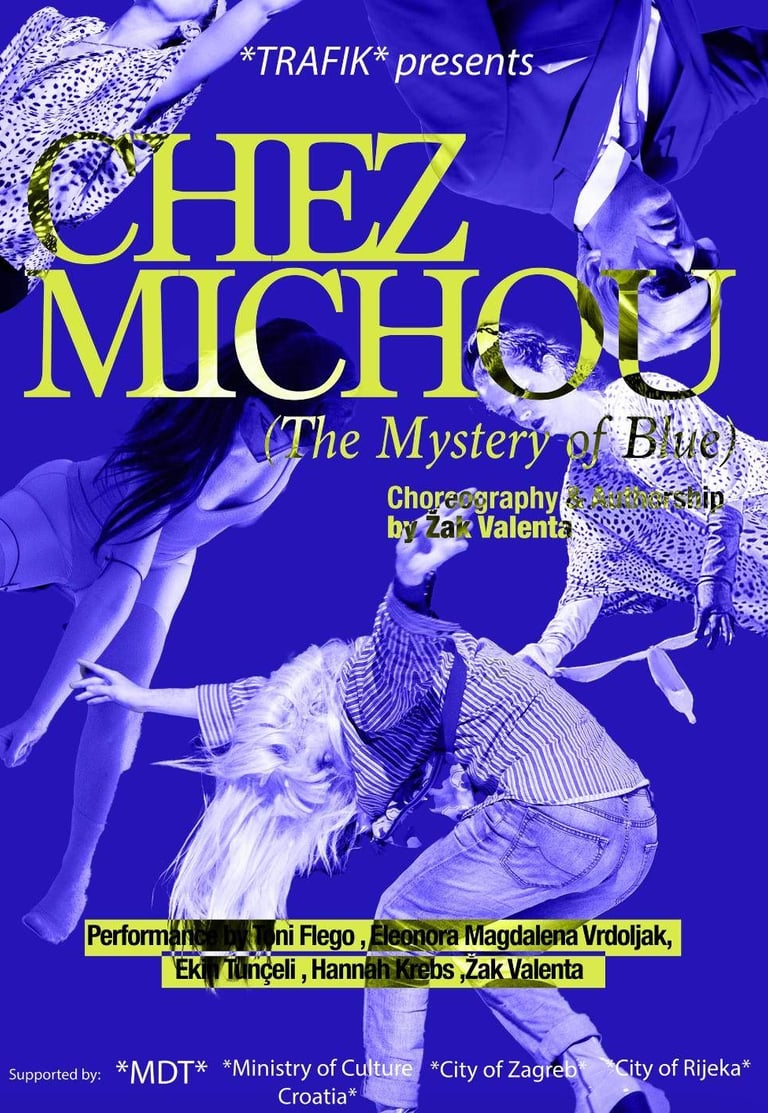

I'M ALIVE
Premiere: 2020
Choreographer / Author: Žak Branko Valenta
Performed by: Toni Flego
Dramaturgy: Andrej Mirčev
Scenography: Magdalena Pederin
Costumes: Lidija Lovrić Bošnjak, Nikola Barbir
Music: Visage, Igor Stravinsky, David Bowie, X REY
Lighting: Žak Valenta, Mario Vnučec
Multimedia: Ira Tomić, John Kardum
Produced by: Trafik in collaboration with PlatformaHR
Duration: 45 minutes
Not suitable for children and minors.
About the project :
A solo dance performance inspired by the radical legacy of British choreographer Michael Clark, blending classical ballet with eccentric fashion and electro-punk music. The piece examines fluid, subversive expressions of gender and identity, reflecting on the socio-economic and ideological challenges of dance on the European Union's periphery.
Through visually striking costumes, a powerful electro-punk soundscape, and multimedia design, I'm Alive! interweaves autobiographical, fictional, and self-reflective narratives. Rooted in Rijeka's avant-garde tradition, it confronts themes of survival, vulnerability, and societal transformation, showcasing a body that defies conventional roles to assert its strength and vitality. The audience's enthusiastic ovations underscore the performance's resonance and its call for connection and support.
Clark’s revolutionary work, rooted in the aesthetics of the 1980s, unmasked heteronormative gender roles, creating fluid, socially subversive embodied expressions that continue to shape contemporary dance. Drawing from Clark’s influence, I'm Alive! explores transformation and recontextualizes choreographic principles into fresh, dynamic performance frameworks.
Following its sold-out premiere and numerous repeat performances in Rijeka and Zagreb, the production opened the 40th Week of Contemporary Dance in Zagreb. It was showcased at the International Dance Festival in Tbilisi, where it won the Grand Prix for Best Performance and Choreography, and was later presented at the Museum of Modern Art in Ljubljana. For his role in the production, dancer Toni Flego was nominated for the prestigious Croatian Theatre Award in the category of best male dancer.
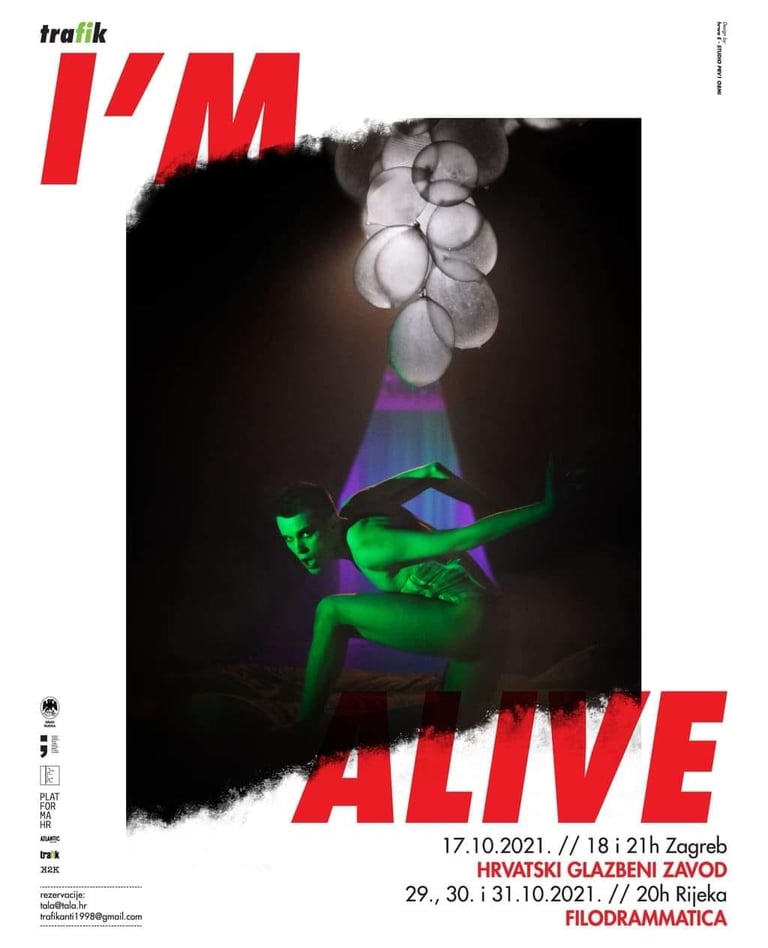

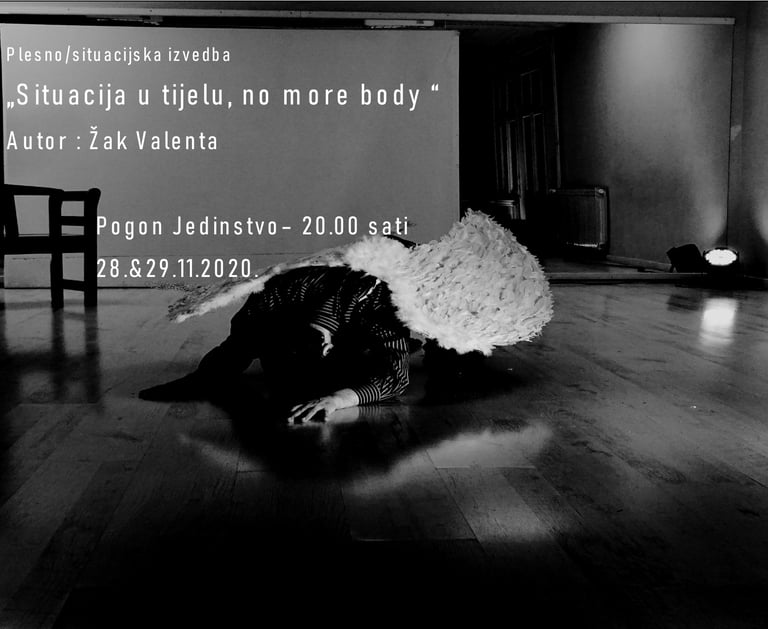

Word from the critics:
The central theme of the performance is disorientation. A fragmented narrative, rapid shifts in characters, language, and action destabilize conventional frameworks. The performers wear costumes dominated by blue—the symbol of Michou—which simultaneously questions traditional masculine associations and introduces an element of mystery. Toni Flego and Eleonora Vrdoljak intentionally appear awkward as they transform from ordinary spectators into drag performers, protagonists of music videos, and scenes reminiscent of Mulholland Drive. Their bodies become instruments for exploring identity, power, and physical instability.
Hostess Ekin Tunçeli subverts the traditional role of the homemaker. Parodying conventional female roles, she replaces the mop with a robotic vacuum cleaner, and by serving bananas to the audience—a nod to Cattelan’s banana stuck on the wall—offers a humorous commentary on the commodification of art. Through a rich collage of references, Chez Michou pays tribute to the cabaret tradition while placing it in a contemporary context. It investigates what it means to be disoriented, how queer bodies deviate from normative movement lines, challenging the audience to confront the discomfort of fluidity.
Produced by Artistic Organization TRAFIK, Rijeka, MDT Moderna Danstatern Stockholm, and SKH Stockholm University of the Arts: Chez Michou, by Žak Valenta.
At a time when gender issues are central to social discourse, Valenta’s performance offers a layered perspective on the subject. At once personal, humorous, and disruptive, Chez Michou promises entertainment, food for thought, and a banana for the body.
© Jelena Mihelčić, PLESNA SCENA.hr, January 17, 2025
What sets Valenta notably apart from David Lynch is his sense of humor. The banana sketch (or bananas)—which we won’t reveal to avoid spoiling the experience—and its reference to a current cultural phenomenon sparked the most genuine audience reaction and serves as one of the most timely commentaries on art today. The finale is equally impressive, featuring a frenetic dance to Annie Lennox’s “No More ‘I Love You’s’.” A brilliant performance, a brilliant execution, and great entertainment—that’s Chez Michou (The Mystery of Blue).
Reviewed for you by: Jelena Oberman
Photo: Mara Prpić, Žak Valenta, Members of the audience
Photo: Ira Tomić, Mara Prpić, Žak B Valenta
Watch the performance here:
Watch the performance here:
